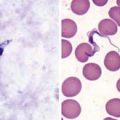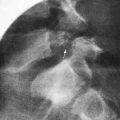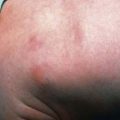Chapter 341 Disorders of the Exocrine Pancreas
Disorders Associated with Pancreatic Insufficiency
Other than cystic fibrosis, conditions that cause pancreatic insufficiency are rare in children. They include Shwachman-Diamond syndrome, isolated enzyme deficiencies, enterokinase deficiency (Chapter 330), chronic pancreatitis, and protein-calorie malnutrition (Chapters 43 and 330).
Boocock GR, Morrison JA, Popovic M, et al. Mutations in SBDS are associated with Shwachman-Diamond syndrome. Nat Genet. 2003;33:97-101.
Ip WF, Dupuis A, Ellis L, et al. Serum pancreatic enzymes define the pancreatic phenotype in patients with Shwachman-Diamond syndrome. J Pediatr. 2002;141:256-265.
Jacobs LJ, Jongbloed RJ, Wijburg FA, et al. Pearson syndrome and the role of deletion dimmers and duplications in the mtDNA. J Inherit Metab Dis. 2004:47-55.
Toiviainen-Salo S, Raade M, Durie PR, et al. Magnetic resonance imaging findings of the pancreas in patients with Shwachman-Diamond syndrome and mutations in the SBDS gene. J Pediatr. 2008;152:434-436.
Zenker M, Mayerle J, Lerch M, et al. Deficiency of UBR1, a ubiquitin ligase of the N-end rule pathway, causes pancreatic dysfunction, malformations and mental retardation (Johanson-Blizzard syndrome). Nat Genet. 2005;37:1345-1350.






